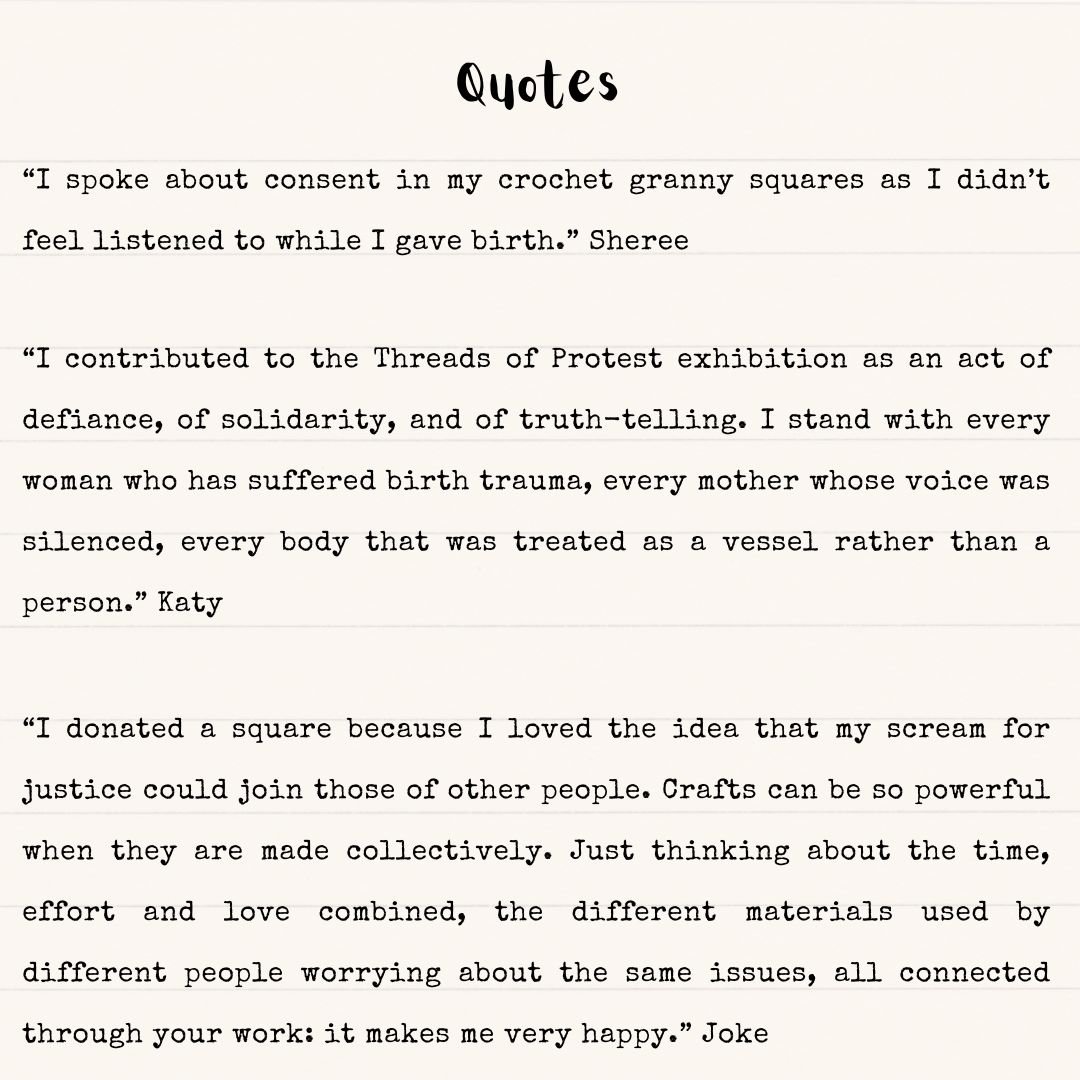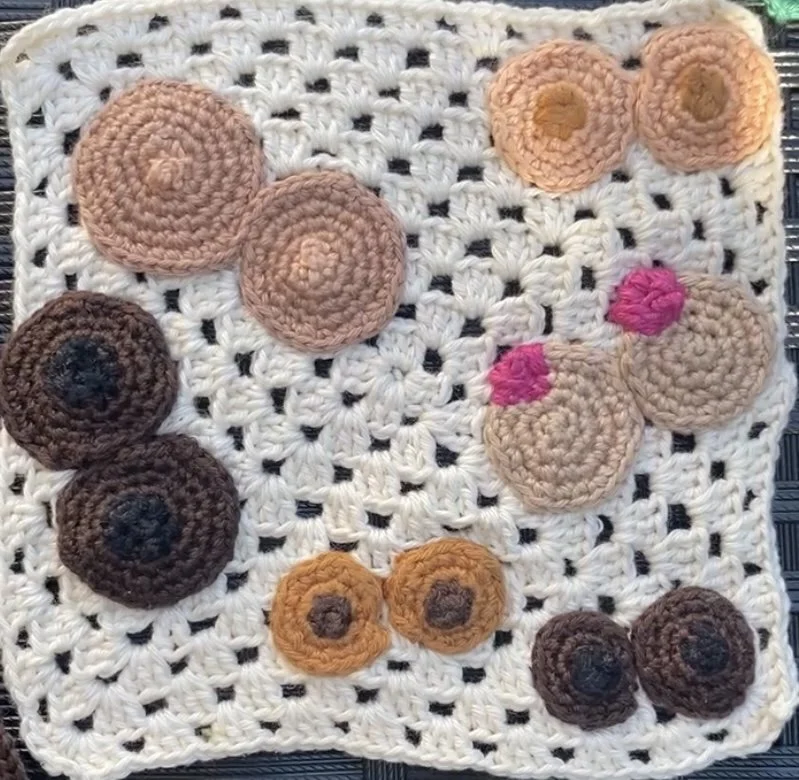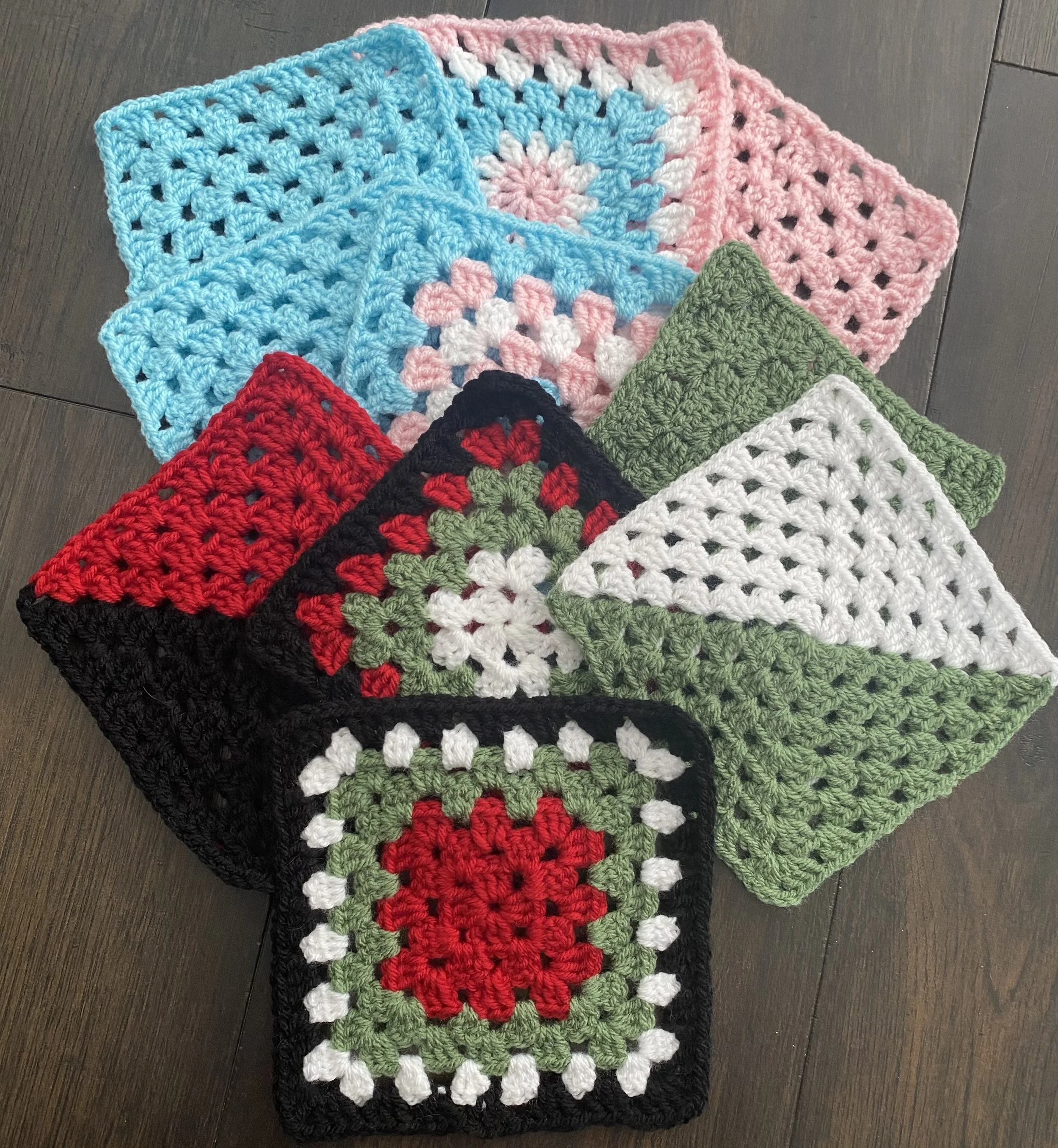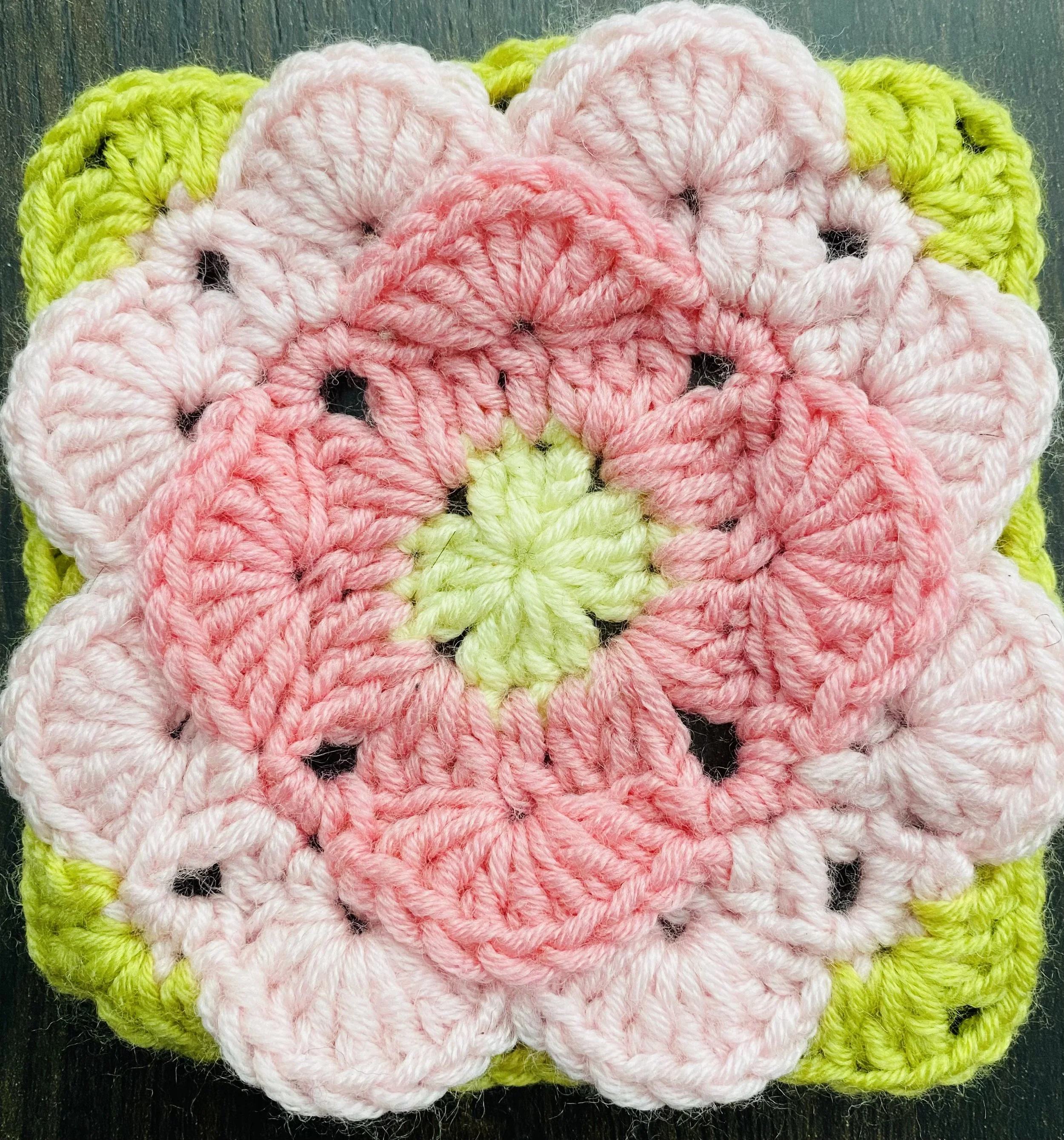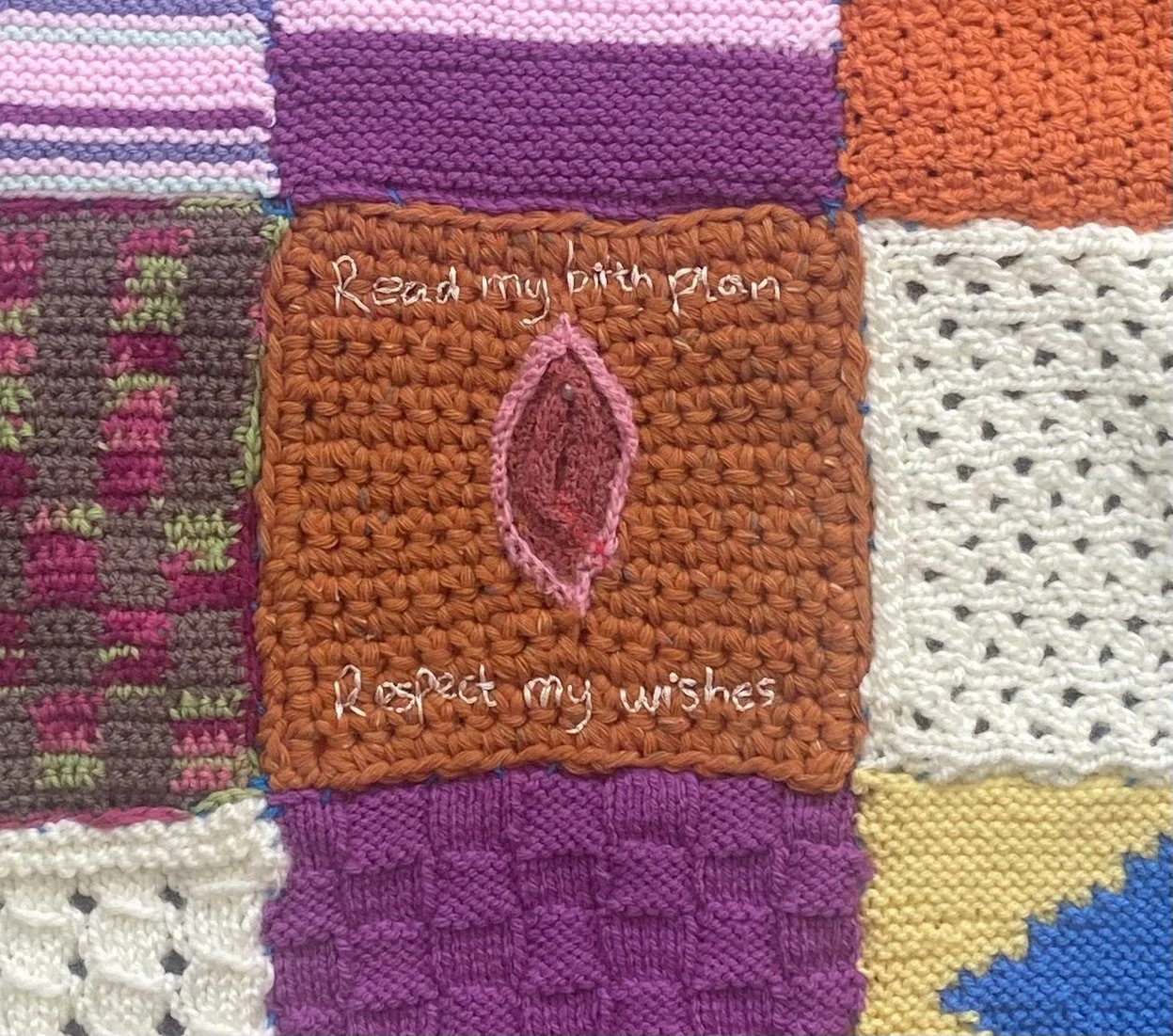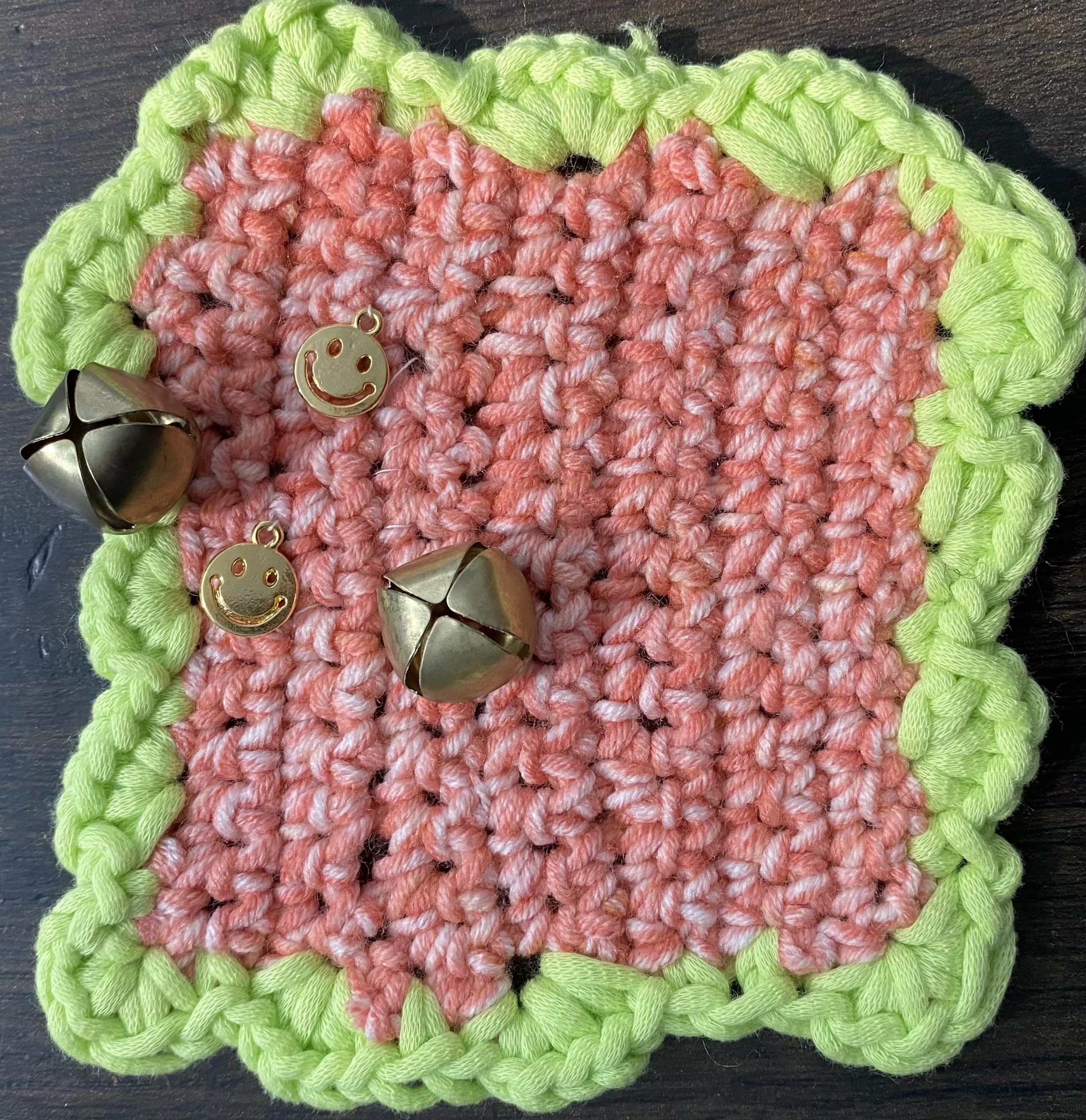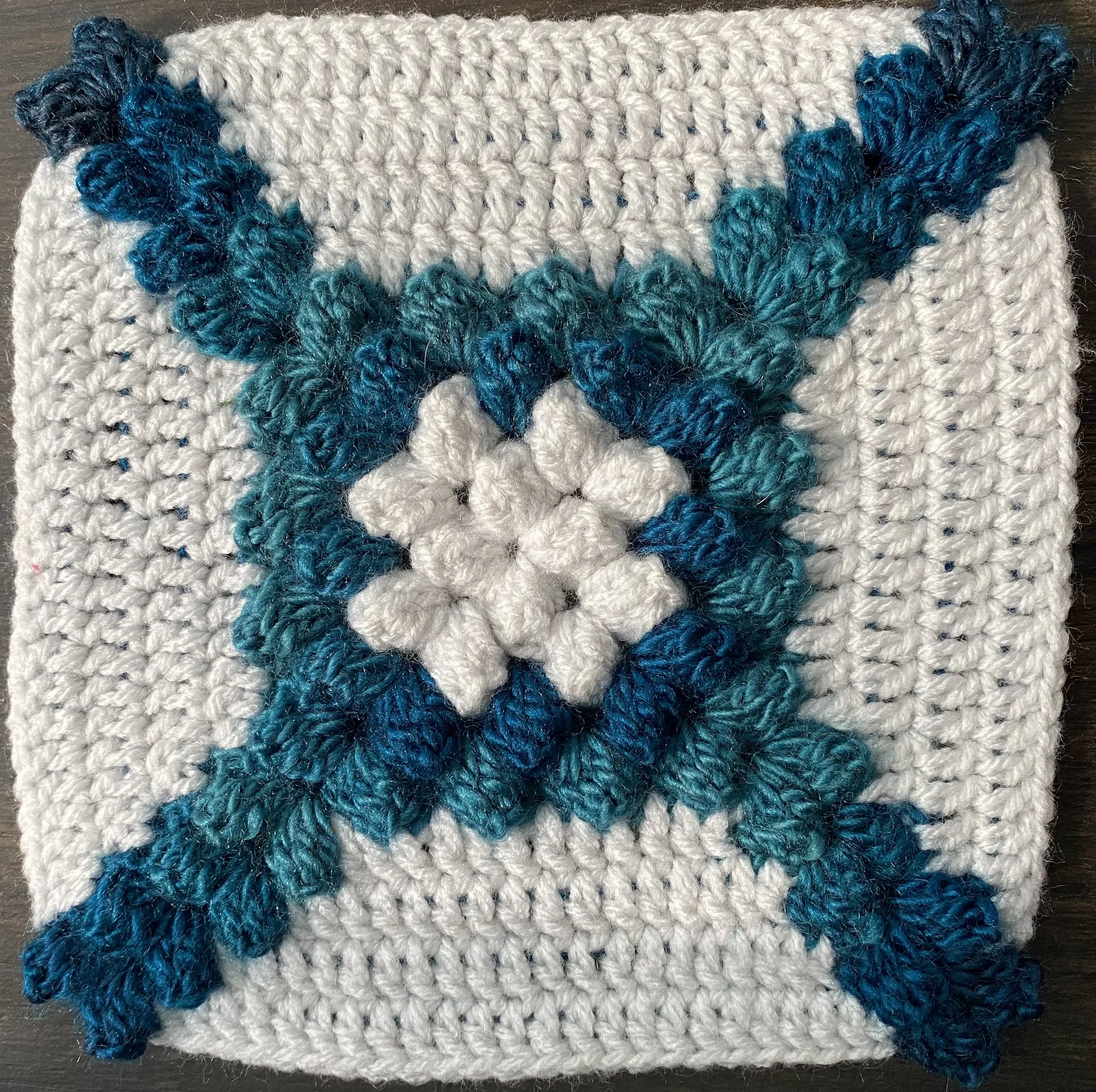
The Granny Square Yarnbomb
‘The Granny Square Yarnbomb’ is based on the history of women protesting with thread and the recent rise in interest in craftivism and yarnbombing. Yarnbombing is when an area is covered in knitting or crochet as a way of drawing attention to an injustice. In this piece we are challenging issues in the maternity system and advocating for improved respect of women and birthing people’s human rights when they access maternity care. The project was written about in Inside Crochet and Laine Magazine and was featured on breakfast radio in both Australia and South Africa. Over 1000 squares were donated from around the UK and abroad.
Granny squares came from a range of places. This included donations through the post via a PO Box address and drop off at A Modern Yarn, a craft and community space in Formby, near Liverpool. In addition, funded by King’s College London and The Being Human Festival, we held free workshops where people could learn to crochet and donate their squares to the project afterwards. These workshops were held at The Atkinson in Southport and at A Modern Yarn. We also held workshops for service users at various charities, including Refugee Women Connect in Liverpool, and Chrysalis and Apex Trust, both in St. Helens. Attendees were provided with a hook, yarn and a crochet booklet. A pdf of the booklet can be found here.
The idea of using granny squares for the project was linked to how relatively easy it is for a beginner crocheter to make one. Only two basic stitches are used and once these have been mastered, the square can quickly grow in size. The history of the granny square also lends itself well to the subversive aspects of Threads of Protest. The pattern has been around since at least 1891, when it appeared in the Art of Crocheting. Typically, linked to ‘grannies,’ domesticity and home related items such as blankets, the use of granny squares to challenge gender based violence upends its original purpose. In ‘The Granny Square Yarnbomb,’ the humble granny square is weaponised against oppression and human rights abuses.
The workshops provided an opportunity for people to come together and work on a shared project. Sometimes women opened up about their birth experiences or wanted to discuss the research behind Threads of Protest. Other times, people simply wanted to enjoy the crafting and the community spirit. When squares were donated, often people sent them anonymously. In some cases people provided notes or letters as to why they wanted to be involved. People were motivated by different factors, some because they enjoyed crafting, and others because they recognised the issues inherent in maternity care and reproductive rights. These quotes have been included on the website with the consent and permission of the authors.
Contributors included professional knitters and crocheters, midwives, activists, academics, children, grandmothers and mothers. A few squares were received from men but most were created by women. Squares came from around the UK but also from Belgium, Germany, Australia, USA, Greece and South Africa.
Participants were invited to donate a granny square - either knitted or crocheted - using any design, colour or yarn, so long as the square was around 15cm x 15cm. People created squares using a range of techniques, including 3d crochet, tapestry crochet, Tunisian crochet and corner to corner. Some people added beaded embellishments and embroidered messaging. One square was made from copper wire, another from garden twine. There were granny squares that had political messaging through the crocheter’s use of colour or design (e.g. crocheted fist) and included were also body parts emblematic of maternity, such as breasts and vulvas.
All the granny squares needed to be sewn together. It was decided that panels should be created so that the crochet could be transported to the galleries. The weight of the pieces was worrying as bigger panels became heavy and when hung the weight may have distorted the squares. Some squares were attached to tapestry crocheted phrases linked to my own academic research and the accounts that women gave of their birth experiences, particularly when they exercised their legal right to decline medical interventions.
When women and birthing people’s rights are not respected this can result in what is termed ‘obstetric violence.’ The definition of obstetric violence is still unclear. However, what is generally agreed is that it typically occurs during childbirth and can be structural, institutional or interpersonal. A structural example would be a case where wider society’s racism or classism negatively affects a person’s birthing experiences, potentially causing them harm. Institutional obstetric violence is linked to the hospital or maternity systems policies or practices. An example is where a hospital policy requires women to be 6 centimetres dilated before they can access the delivery suite. Although all medical interventions are voluntary, such a policy means that women may feel under pressure to submit to vaginal examinations to prove they are 6 centimetres dilated. This goes against the concept of informed consent and therefore undermines human rights in childbirth. Interpersonal obstetric violence relates to the interactions between women and their caregivers. It does not require midwives and doctors to have intentionally caused harm, but their behaviour might result in harm. There are many examples of this from the UK and abroad. Some examples include women being shouted at, slapped, humiliated, coerced into medical interventions, forced to undergo non-consensual vaginal examinations, threatened with social services if they do not conform to hospital policy, neglected and ignored.
You can read more about this in The Freebirth Study.




